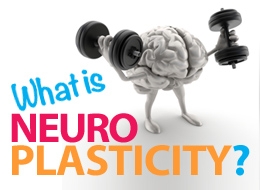Laurie's Blogs.
Apr 2016
Movement, the Brain, your Nervous System & Performance

This week’s blog is inspired by http://breakingmuscle.com/natural-movement/your-brain-on-movement-challenge-your-nervous-system. It’s an interesting blog that delves into working the nervous system to improve performance. If I break it down, it goes like this:
The nervous system governs just about everything in the body, and if we were able to tap into it for the purpose of enhance physical performance, then we could tap into making everything better (strength, flexibility, etc)!
We know that aerobic exercise is good, and strength training is good, and mindful-based training such as yoga or Tai Chi are all beneficial forms of exercise. Based on literature, we can also tap into four areas that could optimize our neural function in exercise:
- Focused attention: When you are distracted by external stimuli, it may actually diminish your performance, and distracted movement is sloppy movement. When you are learning new movements or actively seeking improvement, pay attention! Take the headphones out. Unplug. Tune in. Focus!
- Proprioceptive Demand: Evidence demonstrates that when we challenge our proprioceptive system, we see major improvements in executive function, working memory, and psychological health. Activities that challenge us in NEW situations are best for building this sense by stimulating the mind to lay down new neural connections. So to tap into this, try something new!
- Subtle Variation: Many of the benefits of exercise stem from neuroplastic changes, which are changes in how your neurons interact with each other. Variation stimulates the brain, more so than repetition. So when you are trying out new movements, include subtle purposeful variations and also add variety to your training routine.
- Slow Movement: When we slow things down, we’re able to take in much more proprioceptive feedback. This enables our body to feel the quality of our movement, which is critical to the neuroplastic process.
Exercise can literally change the structure and function of the brain. To make the most of neuroplasticity, try working slowly with focused attention, through challenging movements in novel situations and explore a wide range of movement options.
AND HOW DOES THIS APPLY TO YOUR CANINE PATIENTS?
- Slow down the exercises. Have you seen the videos of dogs running over a line of peanut balls? I ask, why run? This article would suggest that slow and conscious would be better.
- Graduate the dog from the underwater treadmill. In a post-operative situation, there should be a time when the dog graduates from the UWT and moves on to boot camp & neuromuscular rehabilitation for exactly the reasons listed above.
- Encourage sporting dogs to try different sporting activities (i.e. trade training concepts between agility, obedience, freestyle, flyball, etc.). I had a client of mine pass along a tidbit that she had been told by a trainer: “If you want your dog to get faster, let him run with other dogs.” You see, they chase, they run away, they pick up speed, and they catch up. In doing so, there is the motivation to increase speed and so the animal actually tries to get faster! Hmm! That’s rather simply brilliant!
- How could you make a boring exercise, more challenging? For example, lets say a dog is walking on a treadmill or balancing between two blocks. Why not try looping some theraband around his middle and applying a slow steady pull that needs to be resisted (and thought about). Try different directions. (Maybe this is the doggy equivalent of changing your handgrip for the bench press or lateral pull down; getting different muscles to activate.)
Okay so go forth and play with these concepts… and check back in with your reports on what you found!
Until next time… Cheers! Laurie


